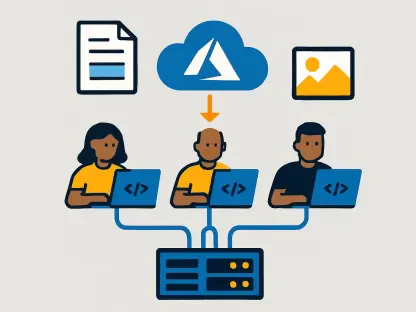The ever-evolving landscape of cloud computing has placed cloud security at the forefront of technology conversations and strategic planning for organizations worldwide. Recognizing the growing importance of securing cloud environments, the Cybersecurity and Infrastructure Security Agency (CISA) has launched the NIMBUS 2000 Initiative. This initiative includes the Cloud Identity Security Technical Exchange, a critical meeting of minds held on June 25, 2025, in Arlington, VA. The exchange brought together seven leading Cloud Service Providers, along with key players like the National Security Agency, the National Institute of Standards and Technology (NIST), and the OpenID Foundation. This collaboration aimed to tackle pressing issues and develop strategies to neutralize emerging threats affecting cloud infrastructure, focusing on strengthening identity security measures.
Challenges in Token Validation and Secrets Management
During the exchange, experts drew attention to the vulnerabilities inherent in token validation technology, especially stateless tokens. While these tokens offer efficiency, they pose significant risks if their signing keys are compromised, resulting in potential widespread breaches and unauthorized data access. This acknowledgment has spurred interest in exploring more secure alternatives, such as stateful validation and the concept of token binding with proof of possession. However, these alternatives are not without their own complexities and challenges. Their implementation requires meticulous planning and potentially high costs, which may lead organizations to hesitate. To harmonize enhanced security with practical implementation, careful consideration of cost-effective and efficient strategies is essential.
Another major concern highlighted during the discussions was secrets management within cloud environments. Centralized secrets management systems play a crucial role in safeguarding sensitive information, but they are vulnerable to misconfigurations and inconsistent policy enforcement, especially at scale. This calls for adopting robust and resilient key storage practices, coupled with stringent access controls. High-performance systems that facilitate regular secrets rotation are paramount to protect against breaches. These measures ensure both resilience and the integrity of the systems while mitigating the risks associated with potential threats.
The Importance of Logging and Visibility
Logging and visibility emerged as pivotal facets of cloud security, yet they are often inadequately addressed. The dialogue highlighted the challenges associated with limited telemetry and inconsistent log retention practices, which significantly undermine the efficacy of threat detection and incident response. This gap necessitates a push towards elevating logging standards and adopting uniform visibility measures. By embracing standardized practices, organizations can enhance their threat detection and response capabilities, facilitating more comprehensive monitoring. To address these issues, it is imperative to establish integrated frameworks that improve the timeliness and accuracy of security responses, consequently fortifying overall security postures.
In support of these improvements, Trend Vision One™ Cloud Security has risen as a notable contributor to the broader cloud security ecosystem. By aligning its capabilities with CISA’s findings, the platform emphasizes enhanced token security, identity protection, secrets management, and advanced logging and forensics. Leveraging global threat intelligence to empower detection models, Trend Vision One enhances its ability to swiftly identify and address sophisticated threats. Trends within this service bring to light the critical measures necessary for reinforcing organizational security—a priority prominently reflected in industry dialogues surrounding cloud security improvements.
Trend Vision One’s Role in Cloud Security
Trend Vision One™ provides cutting-edge solutions that are critical to managing cloud security concerns, particularly in the realm of secrets management. The service offers real-time secret scanning and continuous monitoring for misconfigurations. Additionally, it automates compliance checks against established benchmarks like the Center for Internet Security (CIS) standards, ensuring security remains a focal point during development operations. In doing so, Trend Vision One™ mitigates risk by enforcing robust security postures and supporting organizations in maintaining high standards amid complex cloud environments.
Furthermore, Trend Vision One™ revolutionizes the logging and visibility field by integrating logs from a multitude of sources, such as AWS CloudTrail, VPC Flow, Amazon Security Lake, and Azure Activity Logs. This integration empowers enhanced threat detection capabilities by identifying forged tokens, compromised keys, and unauthorized token generation with precision. Automated responses are streamlined, facilitating real-time containment measures that swiftly revoke suspicious access. Aligning detection models with CISA’s NIMBUS 2000 priorities, Trend Vision One also provides specialized alerts for actions indicative of potential security concerns, ensuring vigilant threat protection.
The convergence of CISA’s NIMBUS 2000 Initiative and solutions like Trend Vision One™ represents a significant shift towards a more resilient cloud security framework. The initiative reflects an increasing awareness and urgency to address multifaceted threats, emphasizing collaboration and the implementation of technological innovations. The unified approach underscores the critical importance of proactive security measures in empowering organizations to confidently adopt cloud technologies while upholding robust security standards.
Moving Towards a Resilient Cloud Ecosystem
During the discussion, experts highlighted vulnerabilities in token validation technology, particularly with stateless tokens. Although they offer efficiency, their signing keys can be compromised, leading to significant breaches and unauthorized data access. This concern has sparked interest in exploring more secure options, such as stateful validation and token binding with proof of possession. However, these alternatives come with their complexities and challenges; their implementation requires careful planning and can be costly. Organizations may hesitate to adopt them without considering cost-effective, efficient strategies for enhanced security.
Additionally, the discussion underscored the importance of secrets management in cloud environments. Centralized systems are crucial for protecting sensitive information but are prone to misconfigurations and inconsistent policy enforcement, especially on a large scale. To counter this, robust key storage practices and strict access controls are essential. High-performance systems that enable regular rotation of secrets are vital for maintaining resilience and data integrity, thus reducing risks associated with potential threats.









